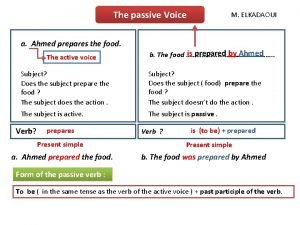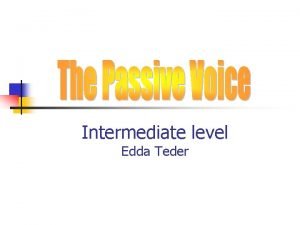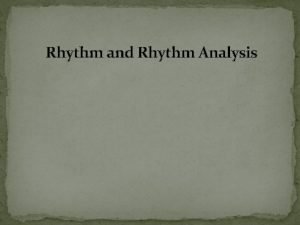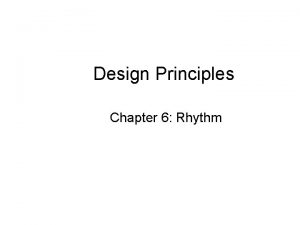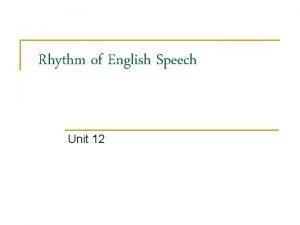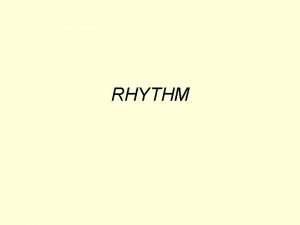CHAPTER 5 Principles of Voice Leading 1 Rhythm









- Slides: 9

CHAPTER 5 Principles of Voice Leading

1. Rhythm: Keep the Rhythm Simple, with most durations being equal to or longer than the duration of the beat. The final note should occur on a single beat. 2. Harmony: Every Melody Note Should belong to the chord that is to harmonize it. 3. Contour: The melody should be primarily CONJUNCT (stepwise). The shape of the melody should be interesting, but clear and simple with a single FOCAL POINT, the highest note of the melody. THE MELODIC LINE

4: Leaps: Avoid Augmented and Diminished Intervals, 7 ths, and intervals larger than a P 8. A melodic interval larger than a P 4 is usaually best approached and left in the direction OPPOSITE to the leap. When smaller leaps are used consecutively in the same direction, they should outline a triad. 5. Tendency Tones: In Tonal Music, 7 -8 (Leading Tone to Tonic) produces the most final sound. End your melody with any of the following scale member combinations: 7 -1, 2 -1, 5 -1, or 4 -3. RULES WHEN LEAPING FROM ONE VOICE TO ANOTHER

Begin your melody with a member of the tonic triad (1, 3, or 5 of the scale Do not repeat notes one after the other or as a rule, return to the same note sooner than four notes later. “Fill in” any leap larger than a 3 rd with at least one note within the leap immediately afterwards Ex; C-F= C-F-E or C-F-D or C-F-E-D ADDITIONAL MELODY WRITING RULES NOT FOUND IN THE TEXTBOOK

Voicing Two a Single Triad: Structures: Close Structure: Less than an Octave between Soprano and Tenor Open Structure: An Octave or more between soprano and Tenor NOTATING CHORDS

Spacing Rules for Voicing: Crossed Voices: Do not allow any part to cross above the Soprano or Below the Bass * The Alto and Tenor lines may cross briefly if it makes musical sense Spacing: There should not be more than an Octave between the Soprano/Alto and Alto/Tenor parts. PART WRITING RULES!

Static Motion= Neither Part Moves Oblique Motion= Only one part moves Contrary Motion= Both move but in opposite directions Similar= Both move in same direction but by different intervals Parallel=Both interval move in same direction by the same TYPES OF MOVEMENT RELATIONSHIPS BETWEEN ANY TWO VOICES

Avoid having Parallel Fifths, Octaves, and Unisons at all costs, or you’ll be in harmonic danger. Parallel’s weaken the harmonic structure and sound when moving from one chord to another. PARALLEL 5 TH, 8 TH, AND UNISONS ARE BAAAAAD!!!!!

Objectionable Parallels= result when two parts that are separated by a P 5 or P 8 move to new pitch classes that are separated by the same interval Consecutive 5 ths by Contrary Motion= A P 5 moving to a P 5 in contrary motion Unequal 5 ths= o 5 followed by a P 5. Just do yourself a favor and avoid this at all cost!! Direct 5 th or 8 ve= Results when the outer parts move in the same direction into a P 5 or P 8, with a leap in the soprano part RULES, RULES!!!!!!





